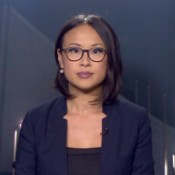Big strides have been made in enlisting more women into the fields of Science Technology, Engineering, and Mathematics, known as STEM.
But gender parity is still out of reach.
CGTN’s Liling Tan looks at the advances and where gaps remain.
Fei Chen is a Ph.D student at New York University’s Tandon School of Engineering, developing methods to make 3D printing technology more secure.
“So I’m holding two 3D printing metal parts. One is showing there is an imbedded QR code inside the part. This is one of our security strategies to embed identifying code inside a 3D printing part to help it identify from counterfeit parts,” Fei Chen a Ph.D student at Mechanical and Aerospace Engineering at NYU Tandon said.
A micro-CT scanner reads the embedded QR tag within the metal cube, so it can determine a 3D printed product’s authenticity.
“According to my knowledge, this is one of the most cutting edge technology that we have invented in our lab at NYU Tandon,” Fei Chen said.
Fei is among a growing cohort of women, working under Professor Nikhil Gupta of NYU Tandon’s Mechanical and Aerospace Engineering department.
“It’s getting more and more common to have women in this field now. A few years back, if you saw, there were fewer women, but now there are a lot of focused efforts to bring women into this field, and they’re paying dividends now,” Nikhil Gupta, associate professor at the Mechanical and Aerospace Engineering at NYU Tandon said
NYU Tandon said it leads the curve when it comes to recruiting women, who account for 33 percent of post-graduate students and 37 percent of undergrads, more than the national average.
“There is a huge need in the U.S. for professionals in STEM fields, engineering and computer science as well as technology fields, so we want to make sure that we are filling those jobs with as many as possible, so we want to take advantage of the whole population,” said Kristen Day, associate dean at NYU Tandon.
Judith Spitz, a former chief information officer at Verizon, now leads a joint program with Cornell Tech, the City University of New York, Verizon and Accenture to help girls pursue careers in computer science where female representation has plummeted from almost 37 percent in 1985 to nearly 18 percent by 2011. Part of the problem A lack of female role models.
“I say to audiences if you close your eyes and imagine a software developer, what do you think of It’s Bill Gates, its Steve Jobs, it’s Mark Zuckerburg, on and on and on and so the question is who are these young women going to try to envision themselves as when they think of themselves in the field of technology,” Judith Spitz the Founder of Initiative for Women in Technology and Entrepreneurship in New York said.
One of the brightest spots is in life sciences, where there are more women scientists.
“I’ve been quite lucky, I’ve been brought up in Life Sciences and the representation of women is better in that field than in chemistry, engineering and mathematics. I think mentorship is really important, so if you see female leaders in the field, then little girls feel they have somebody they can aspire to,” Sonya Dougal the vice president of Life Sciences, New York Academy of Sciences said.
The hope is that with more recruitment drives and attractive grants targeting women, we will see more female role models in the future.
 CGTN America
CGTN America

